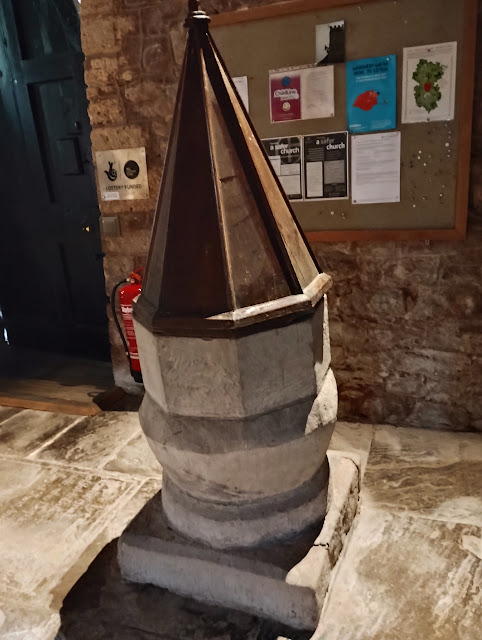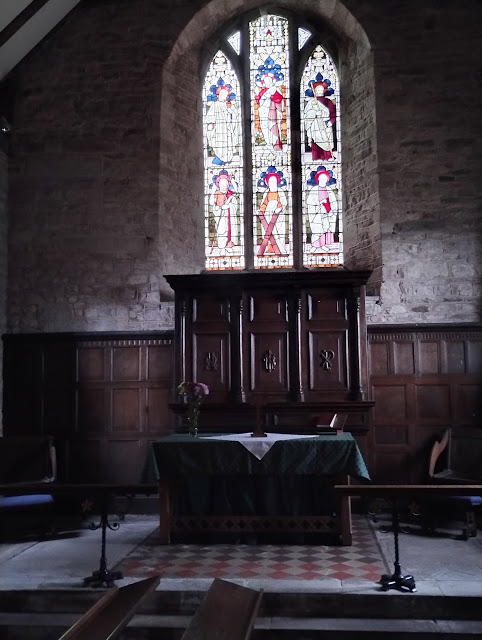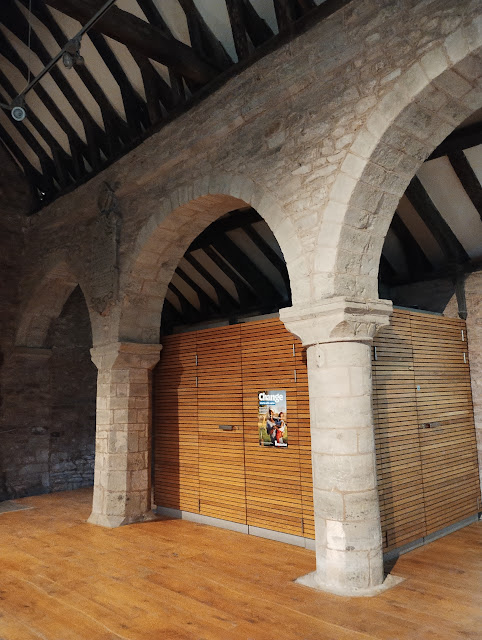The name Bridge Sollars derives from Simon de Brugge (b. 1272) who married Mary Solers (c.1297). St Andrew is a reasonably common dedication in this area of Herefordshire. The church dates from the mid-12th C, with later 12th C extensions, and 13th and 14th C additions. The nave is 12th C, the tower late 12th C, and the north aisle and chancel 13th C. It was (heavily one imagines) restored in 1889.
As you can see, the yellow meadow ants have taken over the churchyard and have humps of their nests in many places.
I'm not sure if this is St Andrew or not.
The Garway example has definite foliage though.
I was so distracted by this abomination stuck behind the Medieval arches, I didn't notice the memorial on the left hand arch. This is a Grade I listed building - aesthetically this is a disaster. I don't even know what it is for, but it would seem this half of the church is the community centre area, so perhaps it is a kitchen. The memorial is to husband and wife, Eliza and William Meats, of The Marsh. The left hand pillar looks a little squiff, judging by the new flooring around it. They aren't a pair so perhaps this one is a replacement.
The Marsh was clearly the local Big House, as this memorial is to its earlier occupants the Makeams.
One of several ledger stones, but more were beneath the modern flooring. One had a little window over it:
A plain-as-a-pikestaff brick and slab chest tomb.
An old church this, which I have driven past many times, thinking, I must stop and look at that sometime. As I intended to visit Madley, and this was right on the corner of the Madley turning, yesterday was the day.

















That roof is amazing.
ReplyDeleteGod bless.
The "abomination" could be, as you say, a kitchen area. I have seen a couple of churches that have a wooden section that opens up to a small kitchen. I have also seen a screen made of vertical wooden slats enclosing toilets in one corner of a church. The PCC and Churchwardens must have jumped through a lot of hoops to get permission to add these to a church. Gillian.
ReplyDeleteA very interesting carving. I am in Herefordshire at the moment so I've looked at my latest edition of Pevsner to see what he says as to me it does not look like a "Green Man" or as they are called these days a foliated head. Pevsner calls it "a grotesque feline head with two dragons emanating from the mouth" which "is related to the Herefordshire School". Malcolm Thurlby, expert on the School says it is "a feline head with two dragons spewing from the mouth to either side of the head". He compares it to one of the dragons at Shobdon Arches. He also says that "The Bridge Sollers sculpture is not of the same high quality as Shobdon and Kilpeck and probably represents the work of a lesser hand, possibly an apprentice from the cathedral workshop". Hope this information is of use.
ReplyDelete